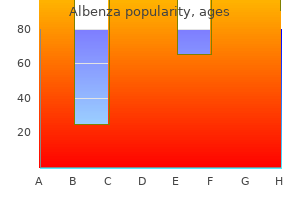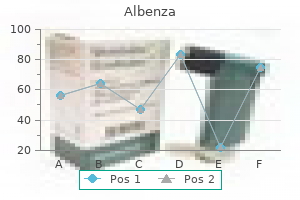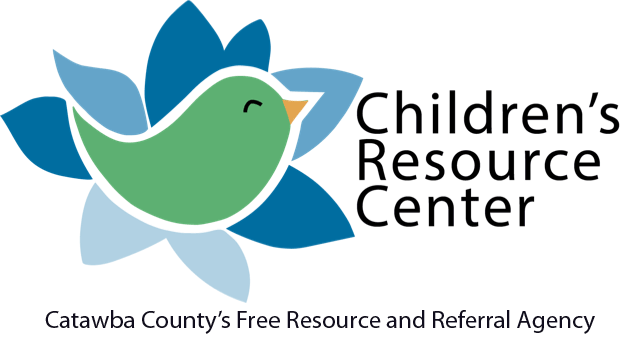Kathleen Ann Cooney, MD
- Professor of Medicine
- Chair, Department of Medicine
- Member of the Duke Cancer Institute

https://medicine.duke.edu/faculty/kathleen-ann-cooney-md
Precautions and Iontophoresis is contraindicated in areas with Contraindications bruises medicine for anxiety buy generic albenza canada, cuts medications zanx buy genuine albenza, or otherwise broken skin medicine wheel colors buy albenza 400mg with amex. Low-Level Laser Therapy Description Low-level laser therapy uses light energy to facilitate therapeutic effects at the cellular level medications not to take when pregnant generic albenza 400mg with mastercard. Though used extensively in Europe, it is an emerging modality in the United States. Lasers in the United States use helium neon (heNe) gas or gallium arsenide (GaAs) as lasing mediums. Indications the Food and Drug Administration has specifically approved the sale of laser devices for the treatment of pain in carpal tunnel syndrome. Laser therapy has been found to be effective in wound healing, the treatment of tendon and ligament injuries, edema control, and scar tissue inhibition. Administration Gridding technique:The treatment area is Techniques divided into a grid of square centimeters. A sterile plastic grid sheet may be placed over open wounds to allow for applicator contact. Scanning technique:This technique is the same as gridding except the applicator does not make contact with the treatment site. More Considerations research is required to determine optimal and standardized dosages. Practices Precautions and There are apparently very few adverse effects Contraindications of low-level laser. The modality should not be applied during the first trimester of pregnancy or over cancerous cells. Mechanical Intermittent Compression Description Intermittent compression techniques use gravity and compressed air to facilitate lymphatic and general venous flow in the treatment of joint swelling and lymphedema. Administration Intermittent compression used various Techniques inflatable extremity sleeves that are alternately filled and emptied of air exerting external pressure on an extremity. They include: Inflation pressure:Inflation pressures are administered between 30 mm hg and 80 mm hg dependent upon treatment goals and target extremity. On/off cycle refers to the amount of time the pressure is exerted versus the amount of time it is relieved. Considerations the patient should have intact sensation and a reliable mental status. Critical Volumetric or limb girth measures effectively Assessment access edema reductions. Parameters Effective Circumferential measurements must be Documentation carefully documented. Measurement areas Practices should be identified by referring to distances from bony landmarks. Precautions and Contraindications include deep-vein Contraindications thrombosis, local infection, congestive heart failure, acute pulmonary edema, and displaced fractures. Indications Mechanical traction is indicated in the management of spinal pain when decompression of nervous, vascular, or articular structures is sought; the reduction of intervertebral disk herniation is desired; or muscular relaxation is required. Administration Intermittent versus sustained:The Techniques physical therapy plan of care should indicate whether the traction should be applied in an intermittent or sustained fashion. The on/off time or duty cycle should be included in the physical therapy plan of care. Treatment time should always be reduced if symptoms appear to increase immediately following intervention. Pelvic and thoracic harness placement: Most commercial mechanical traction units require the use of a stabilization thoracic harness and a traction pelvic harness. It is more effective to place the harness on the patient while in standing position. This eliminates some of the awkward and potentially painful alterations that may be required if attempted in supine position. The pelvic harness should be placed so that its superior edge is just above the iliac crest. Both harnesses should be snuggly secured once the patient is positioned on the traction table. If Assessment the goal of the treatment is to reduce or change Parameters the behavior of pain symptoms, the clinician must use pre and postintervention pain measures such as analog scales, pain maps, and descriptive questionnaires to best monitor and document efficacy. Precautions and Contraindications include spinal infection, Contraindications rheumatoid arthritis, spinal cancers/neoplasms, osteoporosis, and evidence of spinal cord pressure. Parameters Effective pulse duration, frequency, and treatment time Documentation should be documented in order to effectively Practices reproduce treatment. Careful pre and postintervention measurements and wound descriptions are important. Precautions and Electrical stimulation is generally Contraindications contraindicated in pregnancy. Due to the risk of metastasis, electrical stimula tion is contraindicated in the presence of cancer. Other contraindications include the presence of active tuberculosis, in an area of thrombophlebitis or thrombosis, over the carotid sinus, or in areas of active hemorrhage. It is used as a substitute for an orthosis to stimulate paralyzed or paretic muscle. Administration Bipolar technique:This technique Techniques concentrates current in the target area. It is appropriate when targeting muscle groups such as the quadriceps, wrist flexors/extensors, ankle dorsiflexors, etc. One active electrode and an equal-sized dispersive electrode are placed over the target musculature. Monopolar technique:This technique concentrates current in a small, local target area. It is more appropriate when targeting a specific muscle rather than a group of muscles. This technique uses a single, small active or stimulating electrode placed over the target muscle. A second larger dispersive electrode is placed on the same side of the body away from the target area. Treatment Pulse amplitude/intensity:The strength Considerations or intensity of the current is one treatment parameter that influences the quality of the facilitated muscle contraction. As physiological accommodation occurs, the patient usually can tolerate increased intensity. Sometimes it may take one to two sessions for patients to tolerate their maximal intensity. Because higher frequencies influence sensory perception and levels of muscle fatigue, the clinician should select the lowest frequency that achieves the desired results. Pulse duration/width:An inverse relationship exists between pulse duration and amplitude. Typically, clinical duty cycles are 1:3 (such as 5 seconds on and 15 seconds off) or 1:5 (such as 10 seconds on and 50 seconds off). In other words, the ramp function provides for a gradual change in pulse intensity or width rather than an instantaneous change. Critical It is difficult to practically and objectively Assessment assess an electrically induced muscle Parameters contraction. Special emphasis should be placed on describing the quality of the muscle contraction, including smoothness and specificity of joint motion achieved.


Syphilitic labyrinthitis Syphilitic labyrinthitis from acquired or congenital syphilis is very rare but may cause vertigo and/or progressive deafness symptoms 9 dpo discount albenza 400mg without a prescription. Acoustic neuroma Acoustic neuroma (vestibular schwannoma) is a slow-growing benign tumour of the vestibular nerve that causes hearing loss and slow loss of vestibular function medications with acetaminophen order 400mg albenza fast delivery. Vertigo 65 Geniculate herpes zoster Geniculate herpes zoster (Ramsay Hunt syndrome) usually causes vertigo symptoms for pregnancy order 400mg albenza with amex, along with facial palsy and severe pain in the ear treatment atrial fibrillation cheap 400mg albenza with visa. Perilymph fistula As a result of spontaneous rupture of the round-window membrane or trauma to the stapes footplate, perilymph fistula causes marked vertigo with tinnitus and deafness. There is usually a history of straining, lifting or subaqua diving in the spontaneous cases, and treatment is by bed-rest initially, followed by surgical repair if symptoms persist. Owing to its frequency and diversity of aetiology, it is a matter of very considerable importance to workers in all spheres of medical life. Facial asymmetry is accentuated by attempting to close the eyes tightly, to show the teeth or to whistle (Fig. It is important to remember that in supranuclear lesions the move ments of the upper part of the face are likely to be unaffected as the forehead muscles have bilateral cortical representation. A most careful history and aural and neurological examination are essential,including atten tion to such matters as impaired taste (lesion is above origin of chorda tym pani), hyperacusis with loss of the stapedius refiex (lesion is above nerve to stapedius) or reduction of lacrimation (lesion is above geniculate ganglion). Electrodiagnosis is used in the assessment of the degree of involve ment of the nerve and includes nerve conduction tests and electromyo graphy. A detailed description of the various tests is beyond the scope of this volume, but their application is of value as a guide to prognosis and management. In an adult, start with 80mg daily and reduce the dose steadily to zero over a period of 2 weeks. The patient is usually elderly, and severe pain precedes the facial palsy and the herpetic eruption in the ear (sometimes on the tongue and palate). Prompt treatment with acyclovir given orally may improve the prog nosis and reduce post-herpetic neuralgia. Facial palsy in acute or chronic otitis media this requires immediate expert advice, as urgent surgical treatment is usually necessary. Traumatic facial palsy this may result from fracture of the temporal bone or from ear surgery. If the onset is delayed, recovery is to be expected but if there is immediate palsy, urgent surgical exploration and decompression or grafting will be required. The inside of the nose may be obscured by mucosal oedema, septal devia tions or polyps and only with practice is adequate visualization possible. Ideally this is obtained with a head-mirror, but a bright torch or auriscope provide reasonable alternatives. In children, a speculum is often not necessary as an adequate view can be obtained by lifting the nasal tip with the thumb. On looking into the nose the anterior septum and inferior turbinates are easily seen (Fig. The instrument is introduced through the nose and the postnasal space can be inspected at leisure. It has the advantage of allowing photography and simultaneous viewing by an observer. Assessment of the nasal airway Assessment of the nasal airway can be made easily by holding a cool polished surface, such as a metal tongue depressor, below the nostrils. The objects of their choice may be hard, such as buttons, beads or ball bearings, or soft, such as paper, cotton wool, rubber or other vegetable materials; the latter, being as a rule more irritat ing, tend to give rise to symptoms more quickly. The child, however intelligent, is unlikely to indicate that a foreign body is present in his nose; he may, in fact, deny the possibility in order to avoid rebuke. On the other hand, there is often an element of uncertainty, and full reassurance cannot be given until every step has been taken to reveal the true state of affairs. Local analgesia and decongestion are helpful and may be applied in the form of a small cotton-wool swab wrung out in lidocaine/phenylephrine solution. A refractory child should, from the onset, be regarded as a case neces 71 72 Chapter 18: Foreign Body in the Nose Fig. This must be administered by an experienced anaesthetist, and it is usual to employ an endotracheal tube. The surgeon may then remove the foreign body and need have no fear that it will enter the trachea. Rarely, an adult complaining of nasal obstruction is found to have a large concretion blocking one side of the nose. This is a rhinolith, and consists of many layers of calcium and magnesium salts that have formed around a small central nucleus. Injury to the nose may result in one or a combination of several of the following: 1 epistaxis (see Chapter 20); 2 fractures of the nasal bones; 3 fracture or dislocation of the septum; 4 septal haematoma. Lacerations should be cleaned meticulously to avoid tattooing with dirt and sutured carefully with very fine suture material if necessary. The key to whether treatment is necessary is the presence of deformity,which is more readily appreciated by standing behind the patient and looking down on the nose. When to reduce the fracture Nasal fractures can be reduced immediately after the injury with little addi tional discomfort by simple manipulation, but the appropriate medical at tendant is rarely present. More often, the patient presents himself to the casualty officer some time later, by which time oedema may obscure the extent of any deformity and preclude manipulation. After 2 weeks, the bone may be so fixed as to render manipulation impossible, and deformity may be permanent. Reduction of fractured nasal bones the nose should be painted with cocaine paste or sprayed thoroughly with a mixture of lidocaine and phenylephrine to reduce bleeding. Reduction is carried out under general anaesthetic with an endotracheal tube and pharyngeal pack. Anything less than this may be dangerous, Injuries of the Nose 75 because blood can be inhaled. Simple lateral angulation of the nasal bones can often be reduced, with an audible click, by digital pressure on the nose. If the nasal bones are excessively mobile, splinting with plaster of Paris is necessary. The nose is cocainized and the external nasal nerve at its exit below the nasal bone is blocked with lignocaine. Late treatment of nasal fractures If a patient with a fractured nose presents months or years after injury, manipulation is clearly not possible, and formal rhinoplasty is necessary. This involves elevation of the skin from the nasal skeleton, mobilization of the nasal bones by lateral saw cuts and realignment. It is a difficult pro cedure and makes adequate early treatment of nasal fractures all the more important. Septal dislocation with fracture Nasal injury may result in deviation of the nasal septum, causing airway ob struction. Sometimes the septal displacement is accompanied by external nasal deformity that is maintained by the misplaced septum. In such a case, reduction of the nasal bones may be achieved only if the septum is corrected surgically at the same time. Septal haematoma Sometimes, soon after a punch on the nose, the victim complains of very severe or complete nasal obstruction. Both nasal passages are obliterated by a boggy, pink or dull red swelling replacing the septum. Antibiotic cover should be given in an attempt to avert the development of a septal abscess.

Title 42 symptoms of anemia cheap albenza american express, Part 2 of the Code of Federal Substance Abuse and Mental Health Services Relations (42 C symptoms of ms generic 400 mg albenza mastercard. Emergency Department drug addicts in France: A report on Trends From the Drug Abuse Warning 20 fatalities medications given im order cheapest albenza. Bibliography 99 100 Appendix B Assessment and Screening Instruments Several of the following drug and alcohol assessment and screening instruments are available online at medications with sulfa generic albenza 400 mg line. Source: the National Institute on Alcohol Abuse and Addiction Web site at. How often during the last year have you found that you were unable to stop drinking once you had startedfi How often during the last year have you needed a first drink in the morning to get yourself going after a heavy drinking sessionfi How often during the last year have you had a feeling of guilt or remorse after drinkingfi Has a relative, friend, or a doctor or other health worker been concerned about your drinking or suggested you cut downfi In countries where the alcohol content of a standard drink differs by more than 25 percent from 10 g, the response category should be modified accordingly. For patients who are resistant, uncooperative, or noncommunicative, a clinical screening procedure (described by Babor et al. A score of 2 indicates possible alcoholism; a score of 3 or greater indicates probable alcoholism. This can help to gauge the severity of the symptoms and to monitor changes in the clinical status over time. Crampy abdominal pain; diarrhea; active bowel sounds 2 (2) changes in temperature: None reported 0 Do you feel hot or coldfi For example, if heart rate is increased because the patient was jogging just prior to assessment, the increased pulse rate would not add to the score. A need for markedly increased amounts of the substance to achieve intoxication or desired effect or b. Markedly diminished effect with continued use of the same amount of the substance (2) Withdrawal, as manifested by either of the following: a. The same (or a closely related) substance is taken to relieve or avoid withdrawal symptoms (3) the substance is often taken in larger amounts or over a longer period than was intended (4) There is a persistent desire or unsuccessful efforts to cut down or control substance use (5) A great deal of time is spent on activities necessary to obtain the substance. Course Specifiers Note that these specifiers do no apply if the Six course specifiers are available for Sub individual is on agonist therapy or in a con stance Dependence. Remission is based on the interval of time that has elapsed since the cessation of Dependence Early Partial Remission: this specifier is (Early versus Sustained Remission) and used if, for at least 1 month, but less than whether there is continued presence of one or 12 months, one or more criteria for Depen more of the items included in the criteria sets dence or Abuse have been met (but the full for Dependence or Abuse (Partial versus Full criteria for Dependence have not been met). Because the first 12 months following Dependence is a time of particularly Sustained Full Remission: this specifier is high risk for relapse, this period is designated used if none of the criteria for Dependence or Early Remission. After 12 months of early Abuse have been met at any time during a Remission have passed without relapse to period of 12 months or longer. Most individuals with A maladaptive pattern of substance use Opioid Dependence have significant levels of leading to clinically significant impairment or tolerance and will experience withdrawal on distress, as manifested by one (or more) of abrupt discontinuation of opioid substances. This regulation requires that physicians providing opioid addiction treatment obtain signed patient consent before dis closing individually identifiable addiction treatment information to any third party. To: (name or title of the individual or organization to which disclosure is to be made) the dispensing pharmacy to which I present my prescription or to which my prescription is called/sent/faxed, as well as to third party payors. This consent is subject to revocation at any time except to the extent that the program which is to make the disclosure has already taken action in reliance on it. If not previously revoked, this consent will terminate on: (specific date, event, or condition) Termination of treatment. A disclosure may not be made on the basis of a consent which: (1) Has expired; (2) on its face substantially fails to conform to any of the requirements set forth in paragraph (a) of this section; (3) is known to have been revoked; or (4) is known, or through a reasonable effort could be known, by the individual holding the records to be materially false. The Federal rules prohibit you from making any further disclosure of this information unless further disclosure is expressly permitted by the written consent of the individual to whom it pertains or as otherwise permitted by 42 C. Motivation for change is developed by eliciting self-motivational statements, listening with empathy, questioning, presenting personal feedback, affirming the patient, handling resistance, and reframing. Motivational interviewing can be used as a 121 stand-alone counseling approach, but more about the first use of all drugs: age at first use, often it is used as a first step in the recovery drugs used, description of the experiences and process and is followed by other interventions. Effective brief Time interventions should include the following six Explore the pattern of use of each substance. When did he or she last consume Begin with the first psychoactive substance alcohol or ingest or inject drugsfi Most successful brief interventions pro vide clients with some form of feedback of the results of their assessment of alcohol and other drugs. Successful interventions have emphasized a warm, reflective, empathic, and understanding approach. It is common in brief interven tions to encourage self-efficacy for change, rather than emphasizing helplessness or powerlessness. However, even without the benefit of repeated followup, studies consistently document the occurrence of marked behavior change immediately following the brief intervention. What has What is the pattern of withdrawal been the longest time free of opioids in the symptomsfi Describe the characteristics psychoactive substances in the past year, the of withdrawal episodes over time. If so, how long were the detoxification opioids, delirium tremens, hallucinations)fi Ask the patient to describe the sup (detoxification, inpatient, residential, port groups and the level of his or her outpatient, sober-living environment, activities and involvement. Did the patient complete the current psychiatric complaints or symptoms recommended treatmentsfi Has previous Has the patient ever had a substance treatment been medical therapy alone or induced psychotic disorder, mood disorder, medical therapy in combination with anxiety disorder, persisting perceptual comprehensive treatment interventionsfi Was the patient ever anemia, thrombocytopenia, neutropenia, physically, emotionally, and/or sexually lymphocytosis, or other blood disorders; abused, or traumatized in other waysfi What was the complications, spontaneous abortion; pattern of use of prescription drugsfi Did the diabetes, thyroid disease, or other patient take the medications as prescribed, endocrine problem; cancer; hypertension, or more than prescribed, or in combination endocarditis, pericarditis, cardiomyopathy, with alcohol or other drugsfi Has the patient often taken a substance in larger amounts or Use over a longer period than was intendedfi What Detection of Drugs in is the existing problem as the spouse, partner, or significant other sees itfi Have Urine and Other any of these individuals suggested that the Samples patient may have an alcohol or drug prob lemfi What does the patient intensive and costly, and is generally used to understand about the disease of addictionfi


Most common cause of sudden cardiac death in young people and competitive athletes medications narcolepsy cheap albenza express. Subtle diastolic changes can be appreciated before objective hypertrophy with careful echocardiography symptoms queasy stomach buy generic albenza online. Ventricular tachycardia and fibrillation can occur in patients without significant obstruction and cause sudden death medications 5113 generic albenza 400 mg visa. Contemporary definitions and classification of the cardiomyopathies: an American Heart Association Scientific Statement from the Council on Clinical Cardiology symptoms 6 year molars purchase 400 mg albenza with mastercard, Heart Failure and Transplantation Committee; Quality of Care and Outcomes Research and Functional Genomics and Translational Biology Interdisciplinary Working Groups; and Council on Epidemiology and Prevention. Eligibility and disqualification recommendations for competitive athletes with cardiovascular abnormalities: Task Force 3: hypertrophic cardiomyopathy, arrhythmogenic right ventricular cardiomyopathy and other cardiomyopathies, and myocarditis. International Society for heart and Lung Transplantation: Practice Guidelines for Management of heart Failure in Children. Evaluation, Risk Stratification and Management of Pulmonary Hypertension in Patients with Congenital Heart Disease. Endocarditis: infection of the endocardial surface of the heart, including native or prosthetic heart valves, septal defects, the mural endocardium, foreign devices or patches, surgical shunts and indwelling central venous catheters. They often do not have fever and may present with only generalized sepsis or focal neurologic findings from emboli to the brain. Clinical manifestations and evaluation of adults with suspected native valve endocarditis. Prevention of Infective Endocarditis: Guidelines from the American Heart Association. Revision of the Jones Criteria for the diagnosis of acute rheumatic fever in the era of Doppler echocardiography: a scientific statement from the American Heart Association. Diagnosis, Treatment and Long-Term Management of Kawasaki Disease: A statement for health professional from the committee on rheumatic fever, endocarditis and Kawasaki disease, Council on Cardiovascular Disease in the Young, American Heart Association. Explain branchial apparatus, pharyngeal arch, pharyngeal pouch, and pharyngeal groove (cleft) 2. Explain the embryological basis of: ectopic thyroid gland, branchial cysts, clefts of the lip and palate, thyroglossal duct cyst and sinus Lecture Notes: 1. Recall the layers of the trilaminar embryo: o ectoderm (outside) o mesoderm o endoderm (inside) 2. During weeks 5-8 inclusive (embryo period), the structures of the head and neck are developed. Tissue prominences (Pharyngeal Arches) develop in the location of the primordial neck. This development results from the infiltration of neural crest cells from the head into the mesodermal tissue of the neck. The processes involved in the formation of the pharyngeal arches and their products are (as always) proliferation and selective control of the initiating factor (neural crest cells) into specified locations (Hox genes), followed by differentiation of the mesoderm (Hox genes) into tissue types. These pharyngeal arches (numbered 1,2,3,4 (-6) are separated from each other by an internal (endodermal) pouch and an external (ectodermal) groove. The arches, grooves, and pouches have distinct roles although not each results in the formation of an adult structure. The arches supply the cranial nerves, cartilage and bone, muscles, and ligaments to structures in the head and neck (see Table 10-1, pg 221) st 7. Remaining grooves are nd obliterated by overgrowth of 2 arch during neck development. Invagination of tissue leads to formation of thyroglossal duct (remnant is foramen cecum) c. Know the etiology, presentation and management of pharyngitis, acute tonsillitis and peritonsillar abscess 2. They sit in the tonsillar fossa bordered by three muscles and separated from the lateral pharyngeal wall by connective tissue. The fascial planes play a role in both confining and providing potential routes of spread of these infections. These infections typically develop as a result of tonsillitis, dental infection or salivary gland infection. These patients are usually severely ill and may develop upper airway obstruction due to laryngeal edema. Lococorten-Vioform, Gentian violet / mycostatin powder) Chronic Otitis Externa pruritis without obvious infection use topical corticosteroid alone Malignant (Necrotizing) Otitis Externa Osteomyelitis of the temporal bone that occurs in immunocompromised patients or diabetics. Involvement of the sinus cavities along with the nasal cavity is termed rhinosinusitis. Acute sinusitis is usually secondary to rhinitis (such as that caused by the common cold or influenza), of dental origin or from infected material directly entering the sinus. Treatment is primary medical (decongestants and antibiotics) although occasionally surgical drainage is necessary. Allergic rhinitis displays the clinical triad of nasal congestion, rhinorrhea and sneezing. The response is IgE mediated and requires immunologic sensitization to an allergen. The disorder tends to cluster with other allergic disorders and has a strong family tendency. Our involvement with these children and their families often begins before birth and can extend into late adulthood. Affected individuals present a multiplicity of problems and effective management involves a wide range of specialists. The currently accepted model for delivery of this care in the most appropriate way is the multidisciplinary cleft team. It has been suggested that such an integrated system of delivery of care enables the individuals within the team to function in an interdisciplinary way so that all aspects of health care for the cleft condition can be delivered in as seamless a way as possible. This model has an international acceptance and many centres have slowly developed their services along these lines. It is understood that the antenatal diagnosis of clefts involving the lip is relatively straightforward for an experienced sonographer whereas identification of clefts involving the palate is much more difficult. The needs of children with clefts involving the palate, whether or not the lip is involved, are similar and we shall discuss all types of common labiopalatine clefting. This review is written by and based upon the experiences of the individual specialists working at the Newcastle site of the Northern and Yorkshire Cleft Lip and Palate Service. It is based upon our current working practices and we have endeavoured to illustrate how this represents current best practice and the evidence to support this where possible. True prevalence is not known because fetuses with malformations are more likely to be spontaneously aborted than healthy fetuses and, although the risk of cleft lip and palate is three times higher in stillbirths than live births3, most studies only report the prevalence of clefts in live births. This study found that the number of reported cases of cleft lip and/or cleft palate in England and Wales was 1:1054 live births (630 live births with clefts in 1995) and had fallen as compared with 1:930 live births in 1990. This international increase has been attributed to better documentation, decreased neonatal mortality and the increased frequency of marriage of patients with clefts as a consequence of better care. Cleft lip with cleft palate is the most common presentation in most racial groups. The relative prevalence of cleft lip alone varies however, both within and between different racial groups.
Order albenza paypal. [100814 The Muzit Full 4/9] SHINee Live - 화살 Quasimodo.

